cPanel is a popular control dashboard that helps you manage your web hosting server using a human-friendly web-based interface. It’s especially popular with shared hosts, where it’s the de facto solution provided by most affordable hosting providers.
Without cPanel, you would need technical knowledge to manage your websites/server. But with cPanel, you’re able to make changes using a graphical interface – no technical knowledge required.
As popular as cPanel is, not every host uses cPanel to help customers manage their websites, though. For instance, Kinsta uses its own custom WordPress hosting dashboard.
Schedule a demo of the Kinsta platform!
How To Access Your cPanel Dashboard
Assuming your host uses cPanel, your host should provide you with a direct link to access cPanel somewhere in your welcome emails. But if you can’t find that link, here’s a shortcut to access your site’s cPanel dashboard at any time:
- If your site’s URL starts with http, append :2082 to the end of your domain.
- If your site’s URL starts with https, append :2083 to the end of your domain.
For example, you can access cPanel by going to:
http://www.yoursite.com:2082https://www.yoursite.com:2083
Once you visit that address, you’ll be prompted to log in with your cPanel username and password:
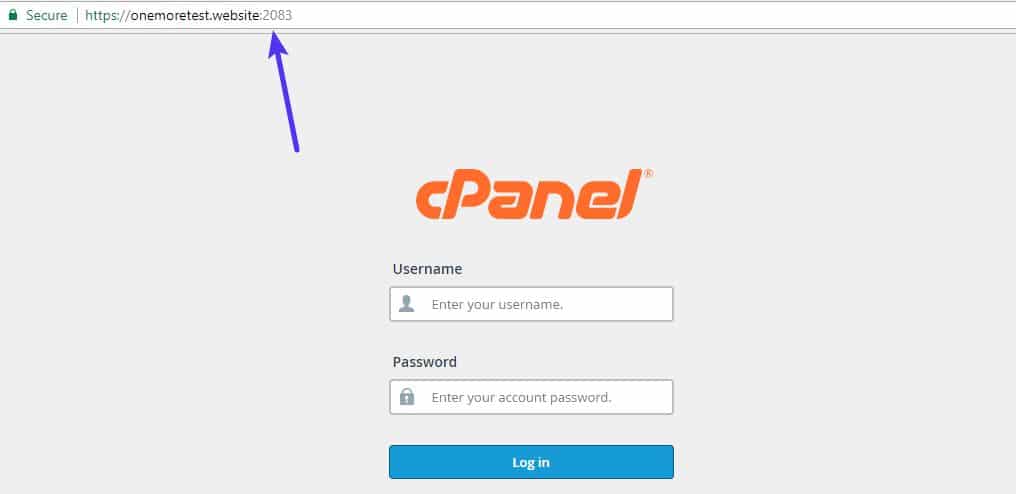
How To Get Your cPanel Username And Password
You should have received your cPanel username and password from your hosting provider, usually in the set of welcome emails you received immediately after signing up.
If you can’t find your username and password, we recommend contacting your host’s support for help as the process to find that information varies between hosts.
What Does The cPanel Dashboard Look Like?
There’s no single “look” for the cPanel dashboard because not only are there different core cPanel themes, but some hosts also apply their own unique styling to the cPanel dashboard.
With that being said, most cPanel dashboards should look roughly like this:
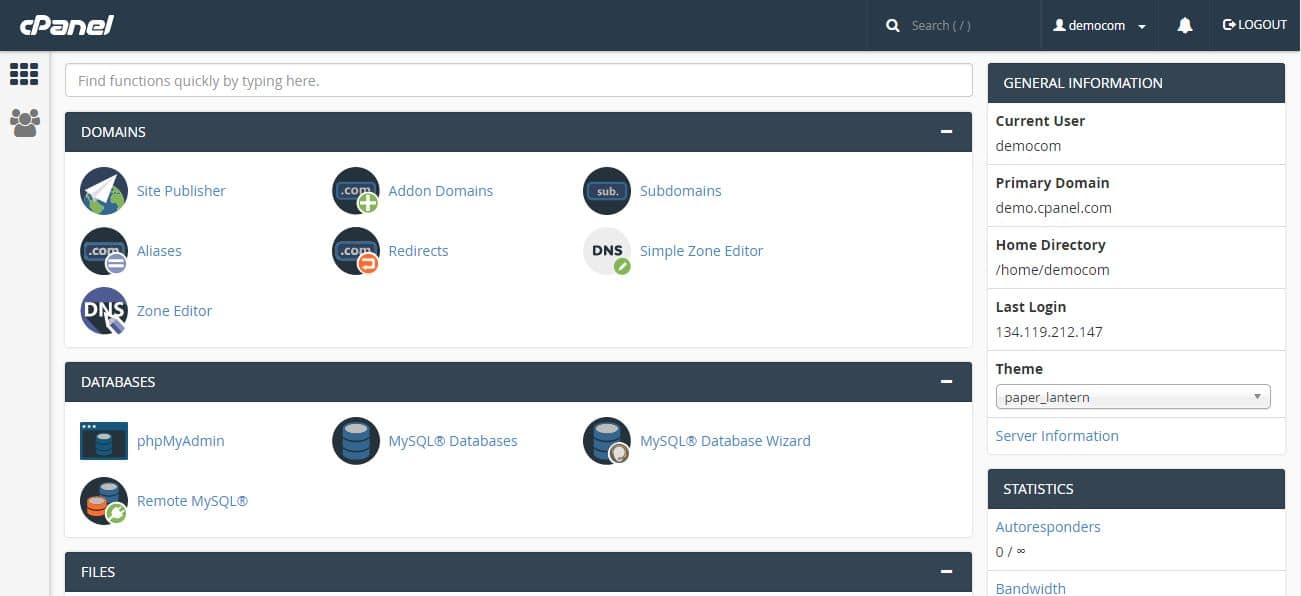
In the center area, you can find a number of different links to manage various parts of your hosting account. And on the right-hand sidebar, you can find basic information about your server.
A Quick cPanel Tutorial – 5 Helpful Things You Can Do With cPanel
cPanel lets you perform a lot more than just five actions. But to keep this section from turning into a book, we’re only going to cover five of the most common things you’ll want to do with cPanel.
How To Install WordPress With cPanel
Most hosts give you access to something called an “autoinstaller” in your cPanel dashboard. This allows you to install WordPress, as well as lots of other software, with just a few clicks.
Of these user-friendly autoinstallers, Softaculous is probably the most popular, though it’s possible your specific host uses a different solution.
To install WordPress via cPanel, all you need to do is look for the autoinstaller’s section and click on the WordPress button:
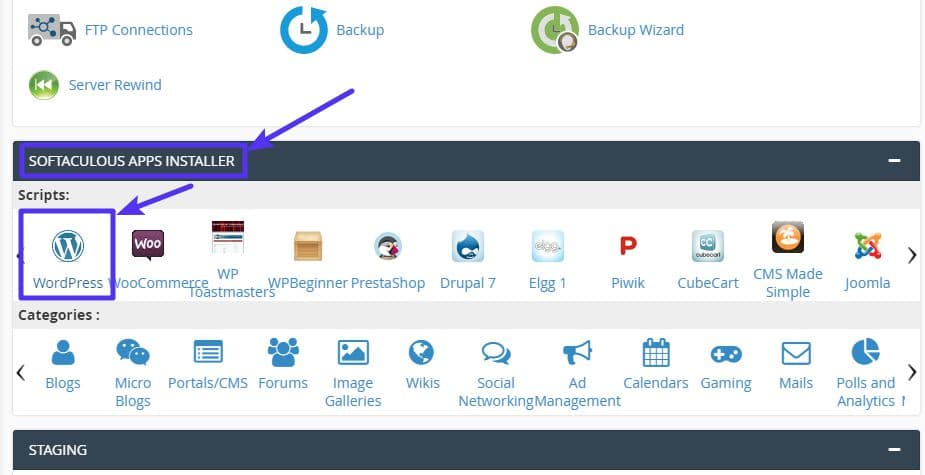
Then, follow the simple setup wizard to complete the WordPress installation process:
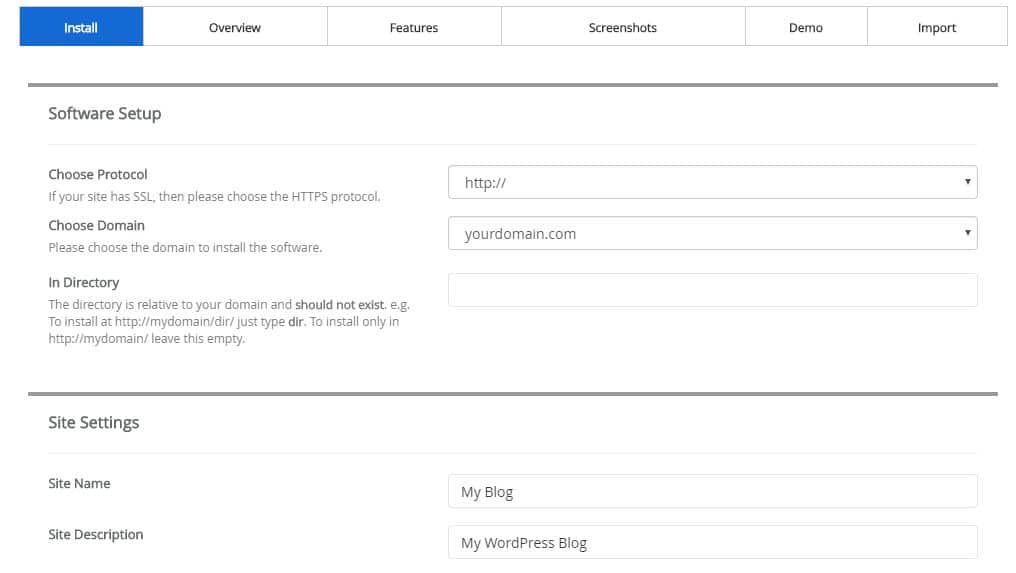
How To Add A New Email Account With cPanel
cPanel makes it easy to create your own email address using your unique domain name.
To get started, look for the Email Accounts option under the Email section:
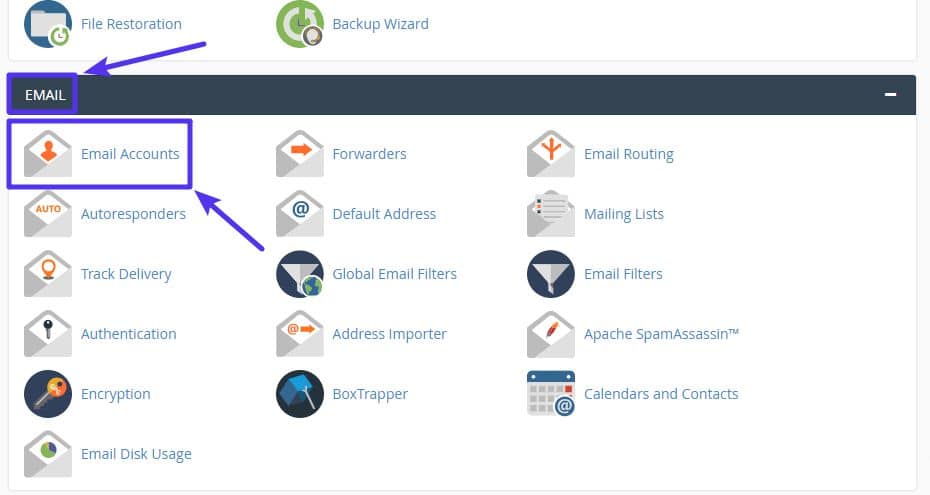
Then, enter the desired address for your email account as well as a password and click Create Account:
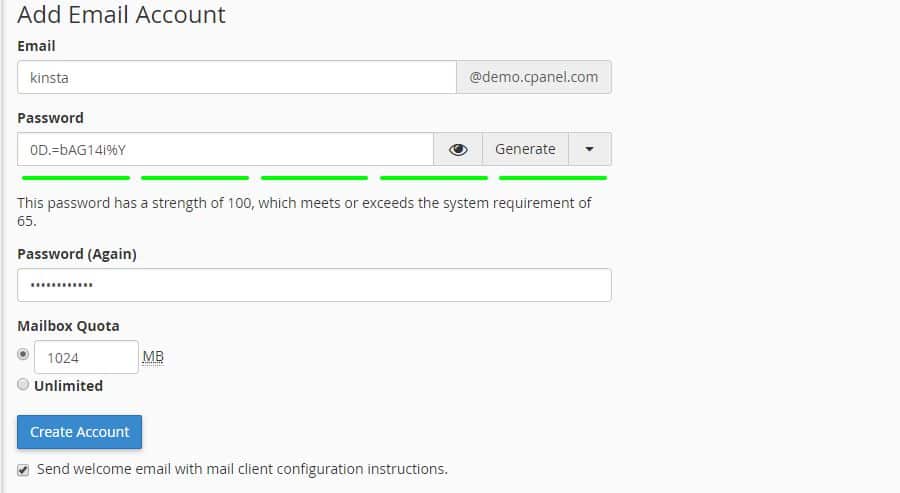
Then, you can either access a webmail account right from cPanel or set up your new email account to work with a standalone email client.
How To Add A New Domain/Subdomain With cPanel
cPanel lets you create two types of domains:
- Addon Domains – these are completely standalone domain names, e.g. kinsta.com
- Subdomains – these are prepended to your domain name, e.g. blog.kinsta.com
To add both types of domains, look for the relevant option in the Domains section:
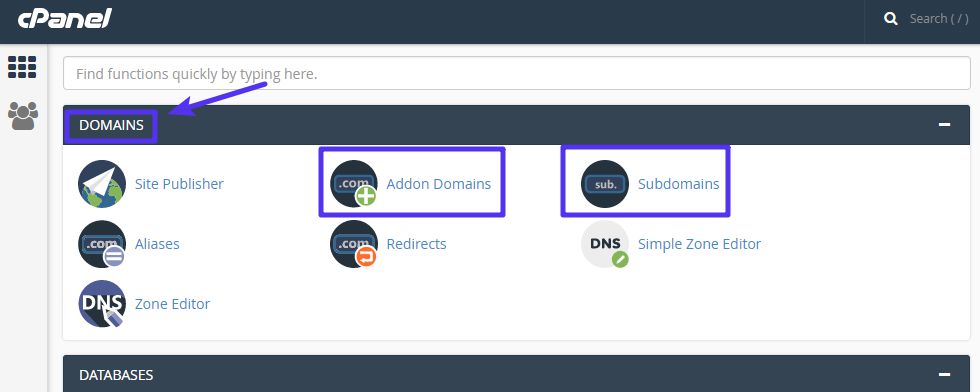
How To Upload And Manage Files With cPanel
While you can always upload and manage files using something called FTP, cPanel also provides a web-based interface to help you manage files called File Manager.
To access it, look for the File Manager option in the Files section:
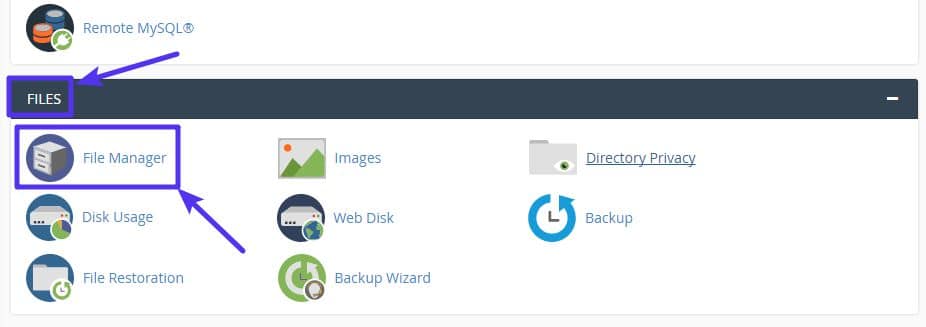
Clicking the button will open up a new interface where you can:
- Browse to different locations using the folder tree on the left
- Manage individual files in the center
- Perform various actions, including uploading and editing files, via the top bar
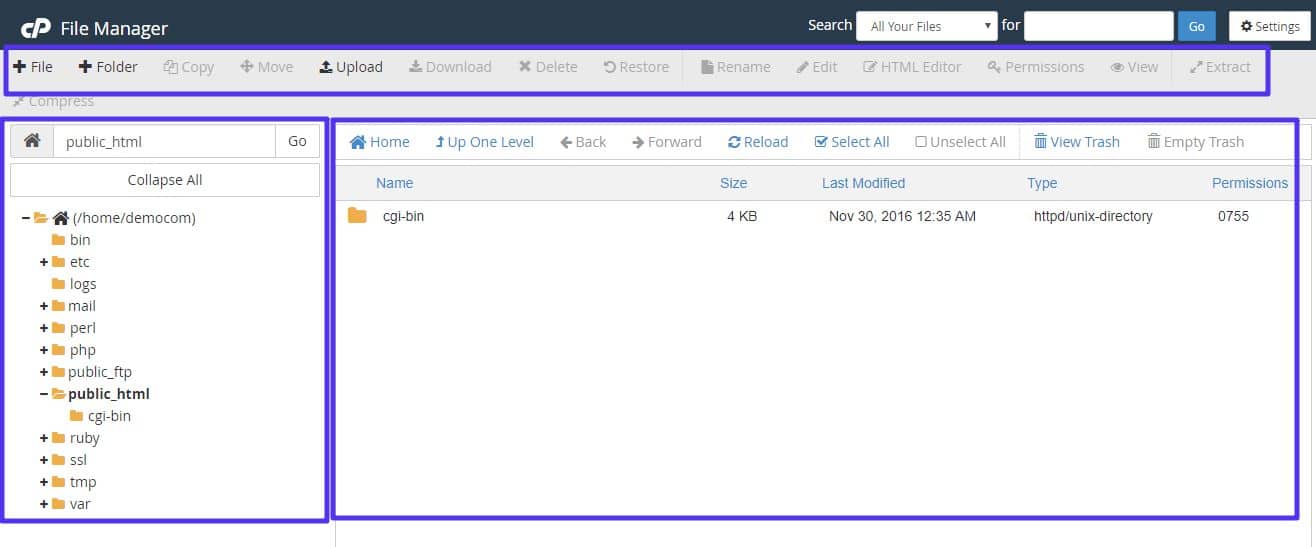
How To Back Up Your Site With cPanel
As long as your site isn’t too large (some hosts impose a limit), you can always manually back up your site from your cPanel dashboard.
To get started, look for the Backup or Backup Wizard options in the Files section (the Backup Wizard is a little more user-friendly, so we recommend that if available):
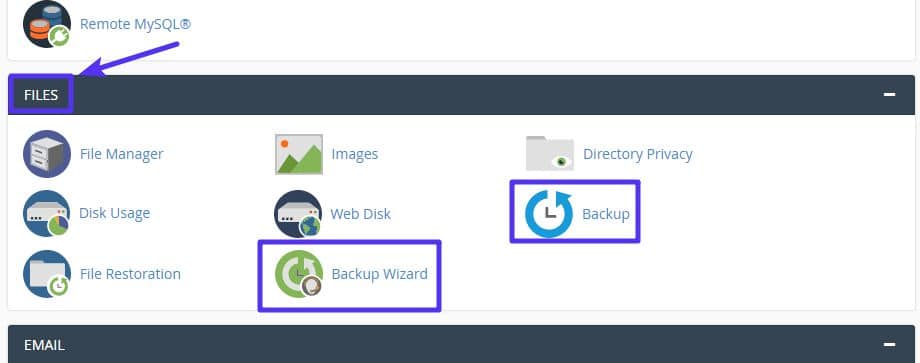
Then, follow the wizard to complete your backup:
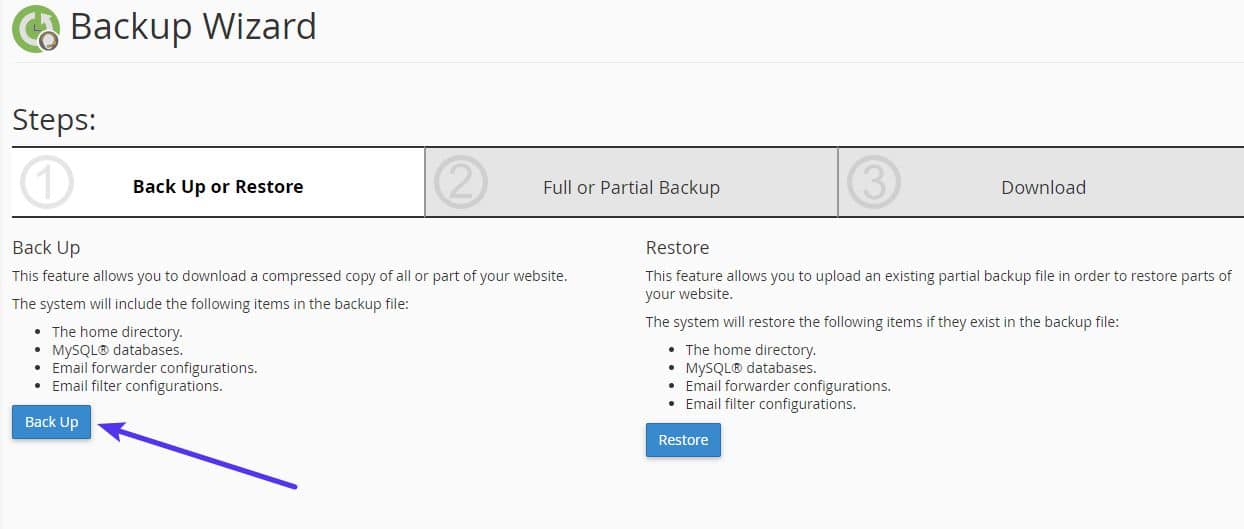
Try It Yourself With This cPanel Demo
Want to play around with cPanel yourself in a safe environment? If so, you can check out the official cPanel demo.
This demo provides a 100% working cPanel interface for you to practice on. The only thing you’re missing is an autoinstaller that allows you to install WordPress.
Because it’s not tied to your live hosting account, you can feel free to play around with all of the cPanel options without any danger of breaking anything.
Are There Any cPanel Alternatives?
As far as mass-market hosting management solutions go, cPanel is pretty much the industry standard.
But many modern hosts, especially in the managed WordPress hosting industry, are opting for custom-built dashboards as a cPanel alternative. For example, here’s what Kinsta’s custom dashboard looks like:
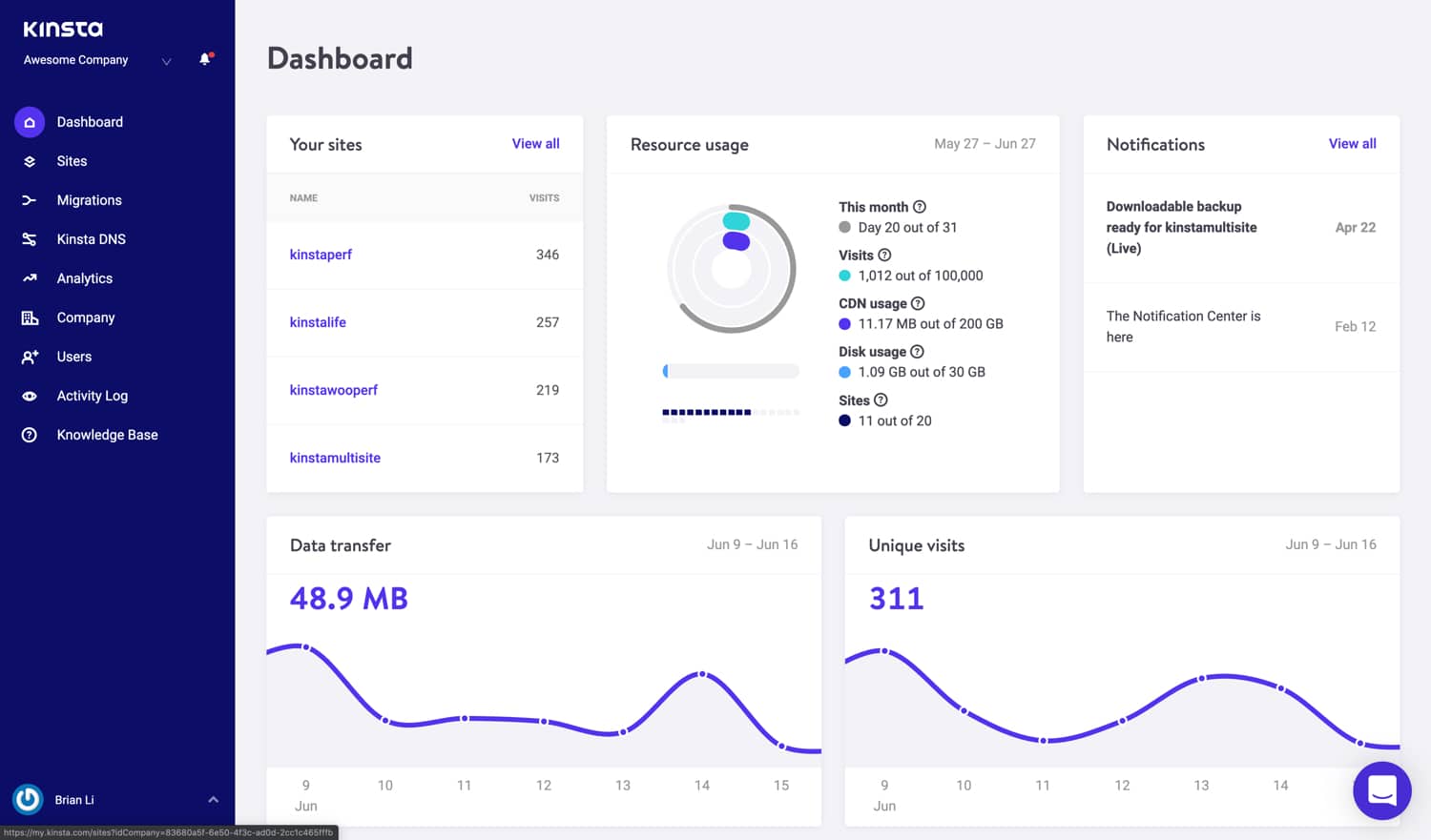
The MyKinsta dashboard, in fact, includes a lot of features that cPanel doesn’t, such as:
- A site migration wizard to help you move a WordPress site to Kinsta.
- A set of useful tools including cache management, free SSLs, search and replace, and more.
- Detailed site analytics and performance monitoring.
- Site deployment in 35 data centers around the world.
- An easy-to-use staging environment.
- Customizable snapshot, downloadable, and external backups.
- Free built-in Kinsta APM tool for detailed performance monitoring.
- Insight into your WordPress site with a plugin overview.
What Is cPanel? It’s Where You Manage Your Site
We’ll wrap things up with a quick reminder of what cPanel is and what it can help you do:
cPanel is a user-friendly dashboard that lets you manage your hosting account and server. Many hosts, especially shared hosts, provide cPanel to their customers. From cPanel, you can perform a number of important actions like:
- Installing WordPress
- Creating a new email account
- Adding a domain or subdomain
- Managing or uploading files to your server
- Backing up your site
And you can also perform many other actions that didn’t make the list.


